Arts and Culture
Museums
Article
The Culturephiles
4eae8034-bbd1-40da-bca1-90c9b26a5975
6 min
https://edge.sitecorecloud.io/tessiturane75c3-tessituraneee12-development-6640/media/Images/Discover-Images/Andrew-Blog/Learning-How-to-Museum/NPG-exterior-768x465.jpg?h=465&iar=0&w=768
A music guy stumbles his way into clarity at the museum.
Learning How to Museum

President & CEO, Tessitura
Learning How to Museum
11/14/2018
6 min
I love the idea of art museums.
The architecture, the collections, the solid peacefulness inside them. The echoes on marble. It’s the “looking at art” part that I have trouble with.
I’ve always been a performing arts guy. I get concerts and theater — they offer a satisfyingly linear experience. At the symphony, there is literally a person who gets up on stage and directs the whole thing. There are norms and conventions about where it starts and ends and when to clap. But an art museum — it is as if you are given the score, assigned 100 talented instrumentalists, and invited to wander among them and find what you like. When do you clap at an art museum?
I can’t be alone in this. And so, without a conductor to tell me how to act, I make the best of it. And historically, I haven’t done very well. If I had to assign myself a “mode” in which I experience an art museum, it is “Graze Mode.” I tend to treat a gallery like an all-you-can-eat salad bar: a little scoop of everything.
My wife, on the other hand, is a devotee of “See it All” mode. She will happily read every label and consider every painting. After 20 years of marriage, we have learned not to bother sticking together at the museum. She knows to just come find me lingering at the café once she has fully consumed the exhibits.
But Graze Mode feels wrong! Sure, I saw that Michelangelo exhibit, but did I get anything from it? Was this really a meaningful connection with art? Or, hand to heart, was I just fishing around for my next Instagram post? Oh, a hard hard truth.
Getting Past Graze Mode
Recently, I tried something new that changed everything for me. For all you secretly insecure museum grazers out there, I may have a solution for you.
My epiphany occurred at the National Portrait Gallery in London. It was an overcast Saturday morning. I had just arrived after a sleepless overnight flight from the U.S., and was desperate for a way to remain upright for the day.
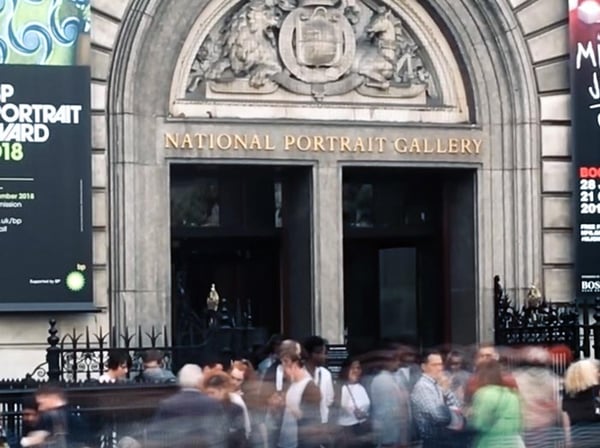
For this visit, I made an intentional commitment to overcome Graze Mode. This was the day! At the admissions desk, I got one of everything — the Audio Guide, the Brochure, and installed the free App on my phone. Within minutes, I was in the first gallery: brochure in one hand, iPhone in the other, earphones on my ears, audio guide dangling around my neck. I was the perfect picture of the American Tourist: Homo Sapiens Dweebus. (Meanwhile, five thousand miles away, my tween daughter was involuntarily rolling her eyes and didn’t even know why.)
I was going into “See It All” Mode. This time it would be different.
And off I went – one painting at a time. Consult Brochure, Read Wall Description, Hold Up smARTify App, Listen to the charming Audio description, furrow my brow at the picture. Slide to the left. Repeat. It only took three Tudor royals for me to realize that getting to Harry and Meghan would take me till midnight. I was crestfallen. I could feel Graze Mode aching to burst forth.
And then I remembered Project Runway.
Tim Gunn to the Rescue
Or more specifically – I remembered Tim Gunn, the fashion personality and former co-host of the Project Runway reality TV show. My friend Allison is so enamored of Gunn that she re-reads this article about his unvarying Sunday routine about once a month just to keep her centered in her world. A Manhattanite, Tim Gunn gets into a suit and tie and walks to the Met Museum (“a sacred place for me”) every Sunday. Once there, he focuses on just a few works of art — “I’ll choose different objects to fixate upon.”
And just like that I realized there was a third mode. Not Graze Mode. Not See-It-All Mode. I was going to try out Gunn Mode. Find a few works of art and “fixate upon” them. And the Portrait Gallery was even going to make it easy for me. They have a rotating “Portrait of the Day” which includes a short talk by a curator, and this day it was Isaac Newton.
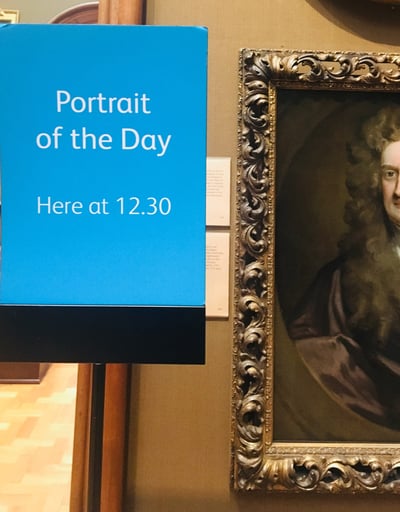
I quickstepped over to see Sir Isaac, my many clattering peripherals startling the other visitors. I listened, I read, I app’d, I looked, and I had a problem. This portrait did nothing for me. I mean, great guy — apple tree, calculus, and all that — but for me on a personal level… it was just another guy in a wig. Was Gunn Mode going to work for me?
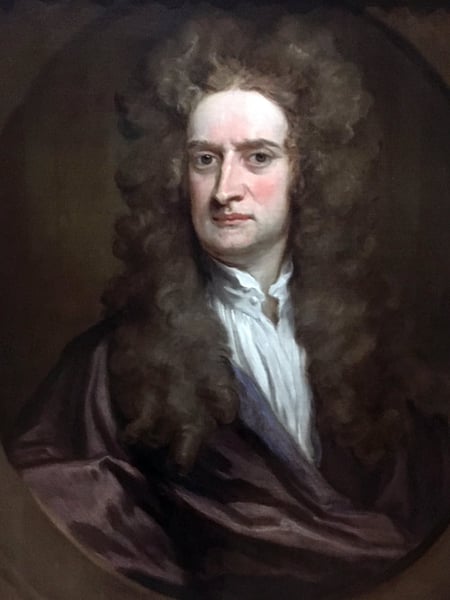
I pulled up the rest of the interview. More than just focusing on any object, when he visits the Met, he searches out those that strike an emotional chord with him: “There are paintings there that just lift me off the ground. I feel buoyant.” Tim was telling me that it was OK if Isaac’s portrait wasn’t lifting me off the ground. I had to keep wandering.
And wander I did. More wigs:
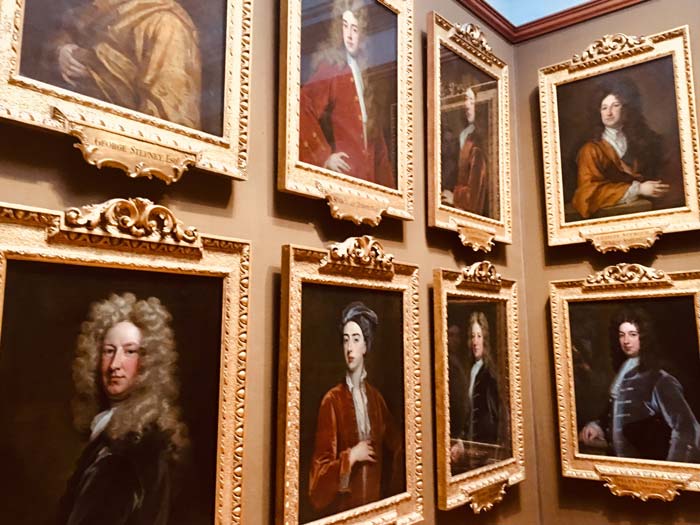
Nope. Many busts:
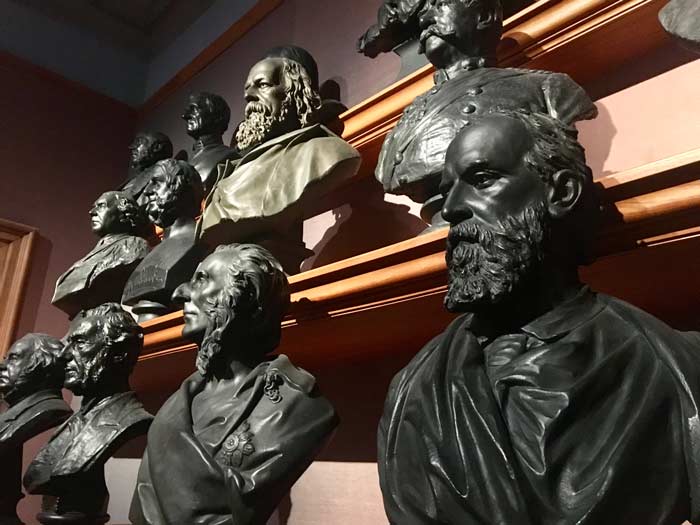
Nope. A gorgeous, endless corridor of wigs AND busts!
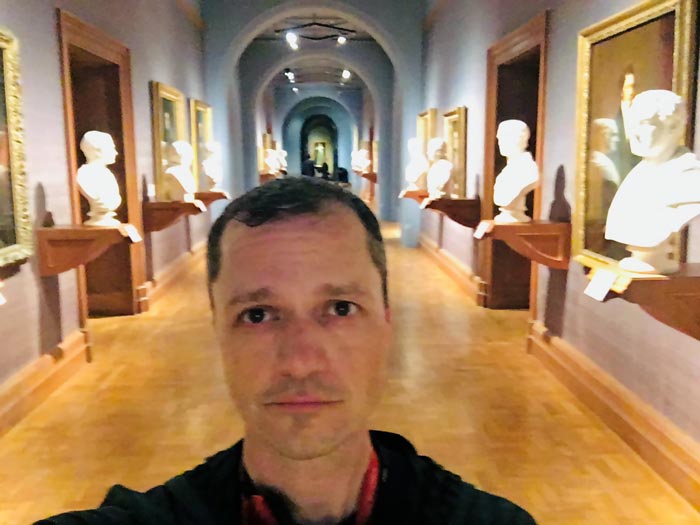
Nope. And then, in a side gallery with no one else in it – my heart filled up. Inexplicably. I felt buoyant.
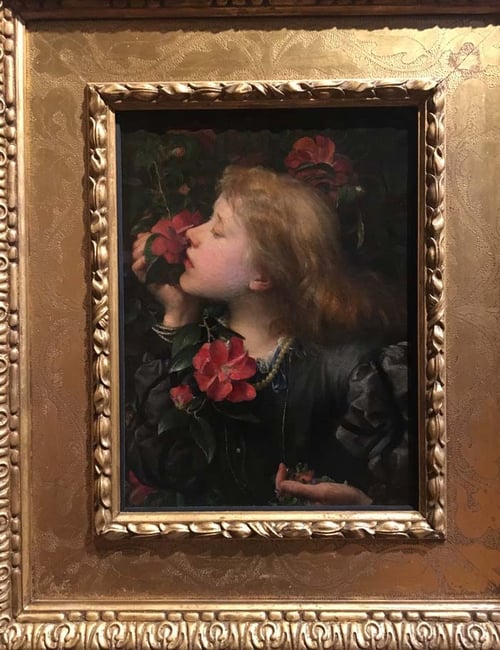
It could have been the delicate composition of the painting after seeing so many very formal works. It could have been the fact that this one had a perplexing name — “Choosing” — which invites you to ruminate on what she’s choosing. But I knew that more than anything, this had lifted me off the ground because it reminded me of that eye-rolling Tween of mine, 5,000 miles away.
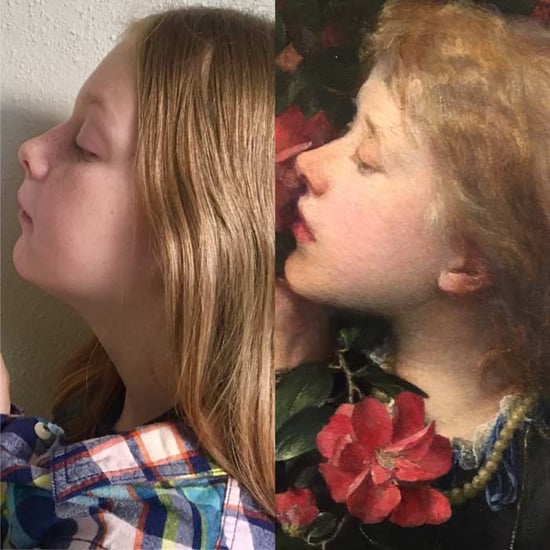
And so I practiced my first attempt at Gunn Mode.
How to Practice Gunn Mode at an Art Museum
- Choose the work: This should be visceral. You’ll know it when you see it. Don’t over think why. Imagine you have a Geiger Counter inside you as you wander the gallery. When the needle jumps for any reason, stop. My Geiger jumped on the Choosing picture and I stopped.
- Take it in (Part 1): Don’t read a thing yet. Just explore your curiosity with the work. What made you stop? Stand there longer than you think should be “normal”. As soon as your regular internal rhythm would suggest you move on, stop yourself for another ten seconds. You may be surprised at what more you discover. I was just transfixed by this delicate painting, surrounded as it was, by so many sober, starchy, mustache men of old. Who is this girl?
- Learn: OK, get your context. Read the description, the artist, the date. At this point I accessed my full utility belt of learning resources. This was a youthful picture of Ellen Terry, a British actress from the mid-1800s. I learned a lot. She had a complicated life.
- Take it in (Part 2): Now with that context in mind, really take it in. Fully immerse yourself in this one work. The art, its place in the world, all of it. Tim Gunn again – when describing Picasso’s portrait of Gertrude Stein – “I feel as though I’m taking the pulse of a moment in the 20th century that was seminal in every possible cultural way.”
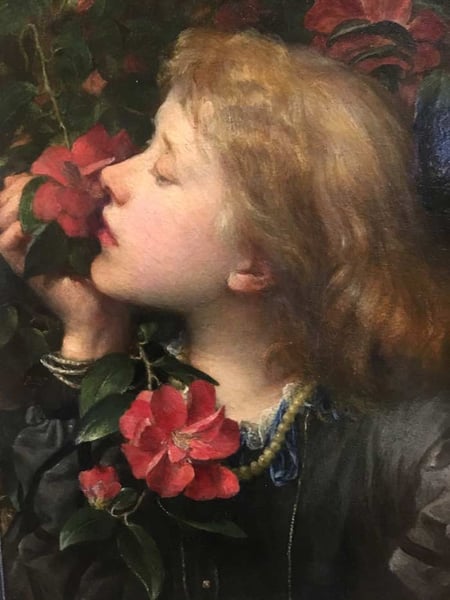
It was that last part — taking it all in — when things got a little nuts for me. I am so programmed to Graze, that I took the extra precaution of forcing myself to stay with this picture for 15 minutes. I set the timer on my phone. Are you aware of how long that is? I sat on a bench and stared at “Choosing” for a while. Then I stood up and got really close to the painting. I could see all the little brushstrokes. I walked as far away from Choosing as I could and glimpsed it from afar. I stood off to one side and gave “Choosing” the side-eye. I looked around to see if the Security guy was whispering into his walkie-talkie. And then I sat back down and checked my timer. Three minutes.
So I started taking in the greater atmosphere around Choosing. The quiet vestibule of the gallery it is in. The chatter and footfalls around me. The London Underground periodically rumbling through the floor, many stories below. And then back to focusing on the painting. So lovely. So delicate. My heart aching and not really knowing why.
If you wait long enough, you get to observe others interacting with “your” painting. Most just brushed past. A pair of teenagers stopped and snapped a photo. As far as I can tell their experience of Choosing was viewed entirely through the smartphone screen. A few others stopped by. 10 minutes now.
Then the really weird part happened. An older bloke stopped short. For a moment I thought I had a kindred spirit. I thought perhaps I was witnessing his Geiger spike too. Then he looked at his wife: “Oh, that’s nice. She’s havin’ a sniff!” The wife leaned in and looked at the label – “Who’s she? Oh, just some child actress.” And they started to leave. I stopped them. “Excuse me — this is a sublime work, people! Ellen Terry was considered the greatest actress of her generation, Sir! The symbolism of this piece is meant to contrast the innocence of her youth – in the Camellia – against her future stardom – in the Violets. She was Dame Ellen Terry, not just some child actress!” “Having a Sniff? For shame!” My dangling peripherals clattered at them as I shook my fists.
OK, I actually didn’t say or do any of that. But I was thinking it! I was genuinely incensed that they weren’t as reverent about Choosing as I had become. I was a little... protective. More to the point, I had been genuinely moved by a painting.
And the stopwatch hit 15 minutes. That is what we call Gunn Mode.
And so I stood up and clapped.
Top photo © National Portrait Gallery, London; photo by Victoria Miller, Digital Programmes.
Topics
Arts & Culture
/Museums
